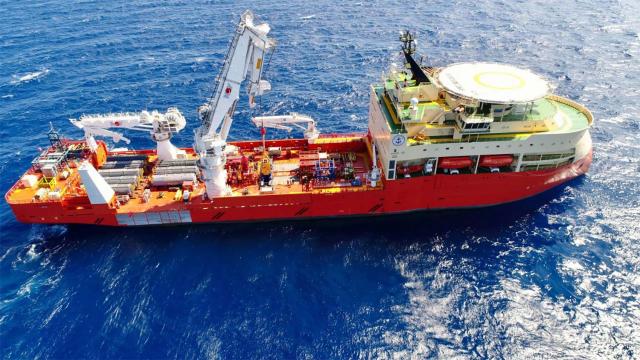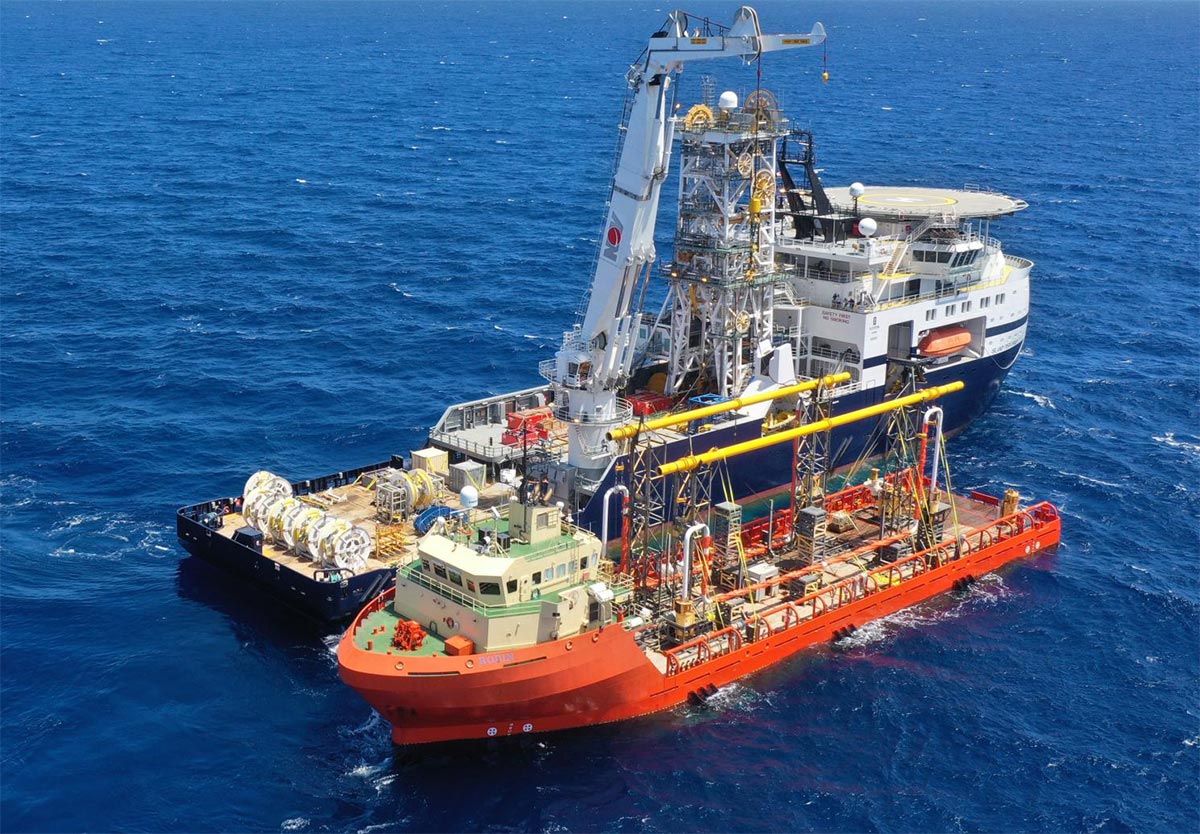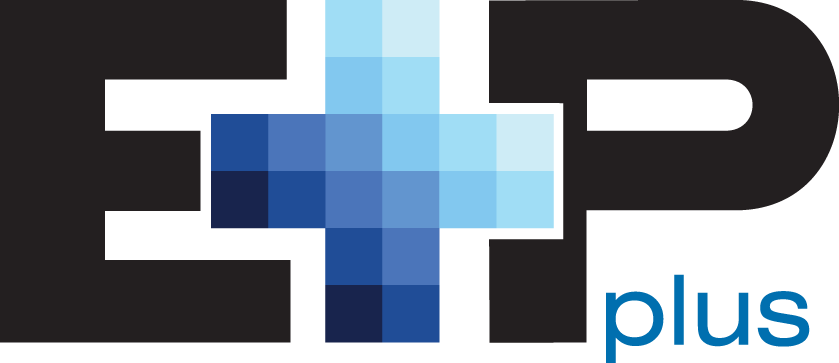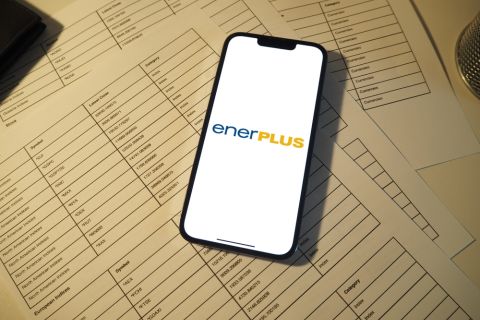
The MV Island Venture prepares to perform riserless light well intervention in the GoM. (Source: C-Innovation)
Presented by:
Editor's note: The full version of this article originally appeared in the February issue of E&P Plus.
Subscribe to the digital publication here.
As the subsea market changes, inspection, maintenance and repair (IMR) work is more typically performed on a call-out basis. Consequently, the use of ROVs also has transformed over the years. Today, ROVs are utilized as a resource that is more valuable and complex than merely a subsea camera and instead play a key role in the efficient maintenance of subsea equipment. As a result, ROVs are now expected to remain subsea for a long duration of time and must be able to withstand the demands of the harsh environment as well as perform a number of technologically advanced tasks.
Operators of subsea assets demand reliability and availability in their operational ROVs, which can be utilized safely and efficiently to complete their work scopes. Most recently, the integration of a subsea control systems interface into the ROV has been a milestone serving to dramatically reduce operators’ costs.
C-I’s Augmented Reality and Mid-Water StationKeep systems provide a robust, systemwide platform utilizing sophisticated ROVs equipped with sensor capacity. These systems enable operators to utilize ROVs as the control system rather than having larger assets on location for those services, saving the operator unnecessary expenditure in the process. Furthermore, the advancement of modular ROV systems allows quick diagnoses of issues and rapid repair times. The ability to monitor sensors more closely, set alarm parameters and track data has provided the industry with a platform that helps maintain offshore equipment better than before.
The ability to respond to a client with a full solution, operating as a single point of contact, reduces the cost to the client and also minimizes risks by dealing with a single subcontractor. By adopting this large-scale, single solution approach, work scopes (e.g., tree installations, hydrate remediation, survey operations and IMR, which used to take up to a year to plan) can be achieved in less than a month.
Installing stem clamps using an ROV
Recently, C-I completed the installation of several stem clamps for bp beneath the Mad Dog spar in the Gulf of Mexico (GoM) utilizing its MV Dove IMR ROV. C-I was engaged by bp early in the project life cycle to provide input into the design of the subsea hardware and installation capabilities of the ROV, which would face limited access to the installation location beneath the facility.
Throughout the planning process, several risks were mitigated for C-I and bp assets by modifying the ROV. This included armouring with Lexan polycarbonate, design of new manipulator mounting subframes to extend the reach of the manipulators by 12 inches and installation of enhanced manipulator controls systems. The C-I project team engaged with the ROV operations groups, offshore managers and tooling group to evaluate the risks involved with the execution of the project. The project was a success and was completed 10 days ahead of bp’s schedule.
Opening valve using only ROV power
A large international operating company in the GoM requested C-I to open an FS2 fluid loss isolation barrier valve using only ROV power. The drilling and completion rig had already moved off site. Therefore, a high cost and even higher impact to the remaining drilling and completion schedule would have been incurred to bring it back just to actuate the valve in question. Ultimately, C-I designed, built and deployed a subsea tree controls interface system, which leverages the existing infrastructure and technology of the ROV systems.
Estimated cost savings were $3 million per well when compared to accomplishing the same with a rig and riser. The client considered the procedure to be a huge success and a long-term solution to an otherwise expensive task. This procedure can easily be repeated across other wells and operators in this region.
Future work
Some of C-I’s most recent awards and extensions for work with a large GoM energy investor include an extension of the well intervention vessel services contract for the Island Venture, providing riserless light well intervention for mechanical and hydraulic stimulations of deepsea assets.
Additionally, C-I has been awarded a four-year extension of an IMR services agreement, which is an all-inclusive contract including vessel, ROV, survey, engineering and project management for field expansion projects, jumper installations, subsea tree installations, facility underwater inspections in lieu of dry docking, commissioning of new assets for field expansion projects and general field support.
Value in consolidating services post-2020
In a market where the oil price is unstable and operating costs are high, efficiency becomes a priority. As work dynamics have changed across the world, so has the dynamics within the offshore oil and gas industry.

In this new era, it is vital to deliver services more quickly and efficiently than ever before without compromising on quality. By combining project management, engineering, procurement, service and personnel into a single source contract, more inclusive offerings can be obtained at the same price structures, securing long-term, more predictable profitability.
Furthermore, by uniting services and offering complete packages to the end user, a single contractor, such as C-I, can maintain a higher utilization rate, enabling projects to be completed more efficiently than ever before. This single source solution approach makes it much easier to identify and implement the best solutions to the wide array of complex problems that are often encountered offshore.
There will continue to be demand for a complete, economical solution under one operating umbrella in the coming years as the industry adapts to the myriad shocks experienced in 2020.
Recommended Reading
Nebula Energy Buys Majority Stake in AG&P LNG
2024-01-31 - AG&P will now operate as an independent subsidiary of Nebula Energy with key offices in UAE, Singapore, India, Vietnam and Indonesia.
JMR Services, A-Plus P&A to Merge Companies
2024-03-05 - The combined organization will operate under JMR Services and aims to become the largest pure-play plug and abandonment company in the nation.
Flame Acquisition Holders Approve Merger with Sable Offshore
2024-02-14 - The business combination among Flame Acquisition Corp., Sable Offshore Holdings and Sable Offshore Corp. will be renamed Sable Offshore Corp.
Enerplus Increases Quarterly Cash Dividend
2024-02-23 - Enerplus Corp. increased its dividend 8% to US$0.065 (CA$0.088) per share.
SilverBow Rejects Kimmeridge’s Latest Offer, ‘Sets the Record Straight’
2024-03-28 - In a letter to SilverBow shareholders, the E&P said Kimmeridge’s offer “substantially undervalues SilverBow” and that Kimmeridge’s own South Texas gas asset values are “overstated.”






